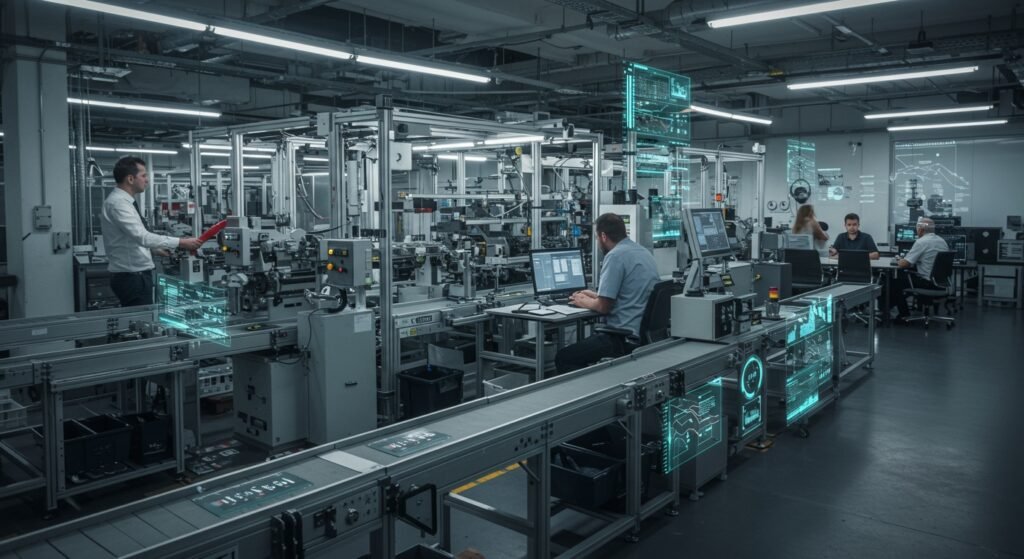Lean Thinking for Modern Operations: A Comprehensive Guide to Efficiency
In today’s fast-paced business world, achieving peak efficiency and continuous improvement is no longer a luxury but a necessity. This is where Lean Thinking for Modern Operations emerges as a transformative philosophy, providing a robust framework for organizations to eliminate waste, streamline processes, and deliver maximum value to customers. Originating from the Toyota Production System, Lean principles have evolved far beyond manufacturing, becoming a cornerstone for operational excellence across diverse industries, from healthcare to software development.
Table of Contents
- Core Principles of Lean Thinking
- Implementing Lean in Today’s Businesses
- 7 Powerful Benefits of Adopting Lean Thinking
- Conclusion
Core Principles of Lean Thinking
At its heart, Lean Thinking revolves around five interconnected principles:
1. Define Value from the Customer’s Perspective
Value is what the customer is willing to pay for. Anything else is waste. Lean methodologies begin by clearly identifying what truly adds value from the end-user’s viewpoint, stripping away non-essential activities.
2. Map the Value Stream
The value stream encompasses all actions, both value-adding and non-value-adding, required to bring a product or service from concept to delivery. Mapping this stream reveals hidden wastes, bottlenecks, and opportunities for improvement. This process is often a key task for industrial engineering professionals.
3. Create Flow
Once waste is identified and eliminated, the next step is to ensure that the remaining value-adding steps flow smoothly without interruptions, detours, or delays. This means creating a continuous, uninterrupted progression of work.
4. Establish Pull
Instead of pushing products or services through the system based on forecasts, Lean advocates for a “pull” system. Production is initiated only when there is a customer demand, avoiding overproduction and excess inventory.
5. Pursue Perfection
Lean is not a one-time project but a journey of continuous improvement. The pursuit of perfection encourages a culture where every employee constantly seeks ways to identify and eliminate waste, driving incremental improvements daily.
Implementing Lean in Today’s Businesses
Applying Lean principles requires a systemic approach and a commitment to cultural change. Modern organizations leverage various tools and strategies to embed Lean into their daily operations.
Tools and Methodologies for Lean Implementation
Several well-established tools support Lean implementation:
- 5S Methodology: Sort, Set in Order, Shine, Standardize, Sustain – for workplace organization.
- Kanban: Visual system for managing work, balancing demand with available capacity.
- Kaizen: Continuous improvement philosophy, encouraging small, ongoing changes.
- Value Stream Mapping (VSM): A visual tool to understand and improve the flow of material and information.
- Poka-Yoke: Error-proofing devices or methods to prevent mistakes.
These tools, when applied effectively, lead to significant improvements in efficiency and quality, reducing the need for extensive rework and costly errors.
Digital Transformation and Lean Trends
The synergy between digital transformation and Lean Thinking is profoundly impacting modern operations. New trends in manufacturing and service delivery are leveraging:
- IoT and Data Analytics: Real-time data collection from processes allows for precise identification of bottlenecks and waste.
- Automation and Robotics: Automating repetitive or hazardous tasks frees up human resources for more complex, value-adding activities.
- AI and Machine Learning: Predictive analytics can optimize inventory levels, forecast demand more accurately, and identify potential failures before they occur.
- Cloud-Based Collaboration Tools: Facilitate seamless communication and information sharing across distributed teams, enhancing flow and responsiveness.
These technological advancements do not replace Lean principles but amplify their effectiveness, providing deeper insights and more powerful tools for waste elimination and flow optimization.
7 Powerful Benefits of Adopting Lean Thinking for Modern Operations
Embracing Lean Thinking yields a multitude of advantages that directly impact an organization’s bottom line and competitive edge. Here are some key benefits:
- Reduced Waste: Directly targets and eliminates the seven types of waste (overproduction, waiting, unnecessary transport, over-processing, excess inventory, unnecessary motion, defects).
- Improved Efficiency: Streamlined processes lead to faster turnaround times and higher output with fewer resources.
- Enhanced Quality: By focusing on preventing defects and improving flow, the quality of products and services naturally increases.
- Lower Costs: Reduced waste, inventory, and rework directly translate into significant cost savings.
- Increased Customer Satisfaction: Delivering higher quality products/services faster and at a lower cost leads to happier customers.
- Boosted Employee Morale: Empowering employees to identify and solve problems, combined with a clearer work environment, improves engagement.
- Greater Agility and Adaptability: Lean organizations are better equipped to respond to market changes and innovate rapidly.
To illustrate the contrast and impact, consider this comparison:
| Aspect | Traditional Operations | Lean Operations |
|---|---|---|
| Focus | Maximizing output, individual tasks | Value creation, flow, waste elimination |
| Inventory | High (buffer stock) | Low (just-in-time) |
| Problem Solving | Reactive, top-down | Proactive, continuous improvement (Kaizen) |
| Employee Role | Task execution | Problem solver, innovator |
| Response to Change | Slow, resistant | Agile, adaptive |
Conclusion
Lean Thinking for Modern Operations is more than just a set of tools; it’s a transformative mindset that fosters a culture of relentless improvement and value creation. By systematically identifying and eliminating waste, optimizing processes, and empowering employees, organizations can achieve unprecedented levels of efficiency, quality, and customer satisfaction. In an increasingly competitive global landscape, adopting Lean principles is not just about staying relevant—it’s about building a resilient, innovative, and highly productive enterprise for the future.


